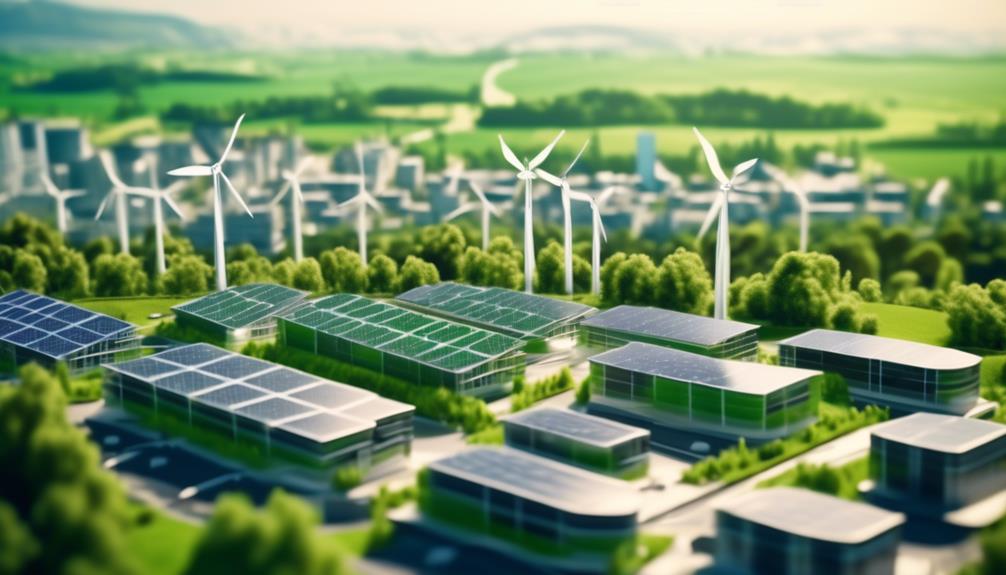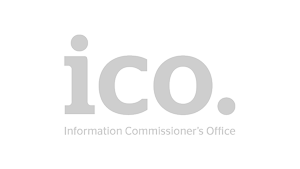In the journey towards sustainability, organisations are increasingly recognising the pivotal role of energy management. With the global imperative to mitigate environmental impact while enhancing operational efficiency, the quest for integrating sustainable energy practices has become more than just a trend—it’s a necessity.
As you navigate the complexities of setting and achieving sustainability goals in energy management, the challenges of incorporating renewable energy sources, adopting energy-efficient technologies, and fostering a culture of sustainability among employees can seem daunting. Yet, these steps are essential for businesses aiming to thrive in a greener future.
Drawing upon years of experience in sustainable practices, this discussion aims to demystify the process of setting actionable energy management goals. By focusing on practical strategies and real-world applications, we address the needs of businesses committed to reducing their carbon footprint and improving energy efficiency.
As we delve into the integration of renewable energy, the implementation of cutting-edge technologies, and the mobilisation of employee engagement towards sustainability, you’ll find the guidance needed to navigate this journey. Let’s explore together how your organisation can achieve its energy management goals, ensuring that your efforts contribute effectively to a more sustainable future and encouraging you to read on for insights and solutions tailored to your needs.
Key Takeaways
- Sustainability goals for energy management are important because they reduce energy consumption, improve air and water quality, mitigate climate change, and minimise solid waste disposal.
- Stakeholder engagement is crucial in achieving sustainability goals as it involves employees, customers, suppliers, and local communities. It leads to more comprehensive and effective strategies, enhances accountability and credibility, and promotes responsible consumption and production.
- Sustainability reporting provides a structured framework for measuring and managing sustainability performance. It enables transparent reporting of energy consumption and greenhouse gas emissions, identifies areas for improvement, enhances accountability and credibility, and aligns with global sustainability goals.
- Setting measurable energy management targets is essential as it establishes clear and specific goals for energy reduction, measures and analyses energy usage to identify areas of improvement, implements energy-saving measures and technologies, monitors progress, and adjusts targets based on changing business needs.
Importance of Sustainability Goals
Setting sustainability goals for energy management is crucial for reducing energy consumption, improving air and water quality, mitigating climate change, and minimising solid waste disposal. Sustainable energy management not only decreases our dependency on fossil fuels but also contributes to affordable clean energy, supports sustainable cities and communities, promotes responsible consumption and production, and aligns with global sustainability goals.
One of the key aspects of setting sustainability goals is the importance of stakeholder engagement. Engaging stakeholders in the goal-setting process ensures that all perspectives are considered, leading to more comprehensive and effective strategies. By involving stakeholders, such as employees, customers, suppliers, and local communities, organisations can gain valuable insights and support for their sustainability initiatives.
Another benefit of setting sustainability goals is the ability to track and report progress through sustainability reporting. Sustainability reporting provides a structured framework for organisations to measure, manage, and communicate their sustainability performance. It enables organisations to transparently report their energy consumption, greenhouse gas emissions, and other sustainability metrics to stakeholders. This not only helps organisations identify areas for improvement but also enhances accountability and credibility.
Setting Measurable Energy Management Targets
To effectively manage energy consumption and drive sustainability, organisations must establish measurable targets for energy reduction and efficiency improvement. Setting measurable energy management targets is crucial for organisations to track their progress and ensure continuous improvement. Here are four key steps to setting and achieving these targets:
- Establish specific targets: Organisations should set clear and specific targets for energy reduction over a set period, such as a percentage decrease in energy consumption or carbon emissions. These targets provide a benchmark for progress and motivate teams to work towards sustainable energy practices.
- Measure and analyse energy usage: Integrating energy audits and regularly monitoring energy data is essential to identify areas of high consumption and waste. Accurate measurement helps organisations understand their current energy usage and identify opportunities for improvement.
- Implement energy-saving measures: Once energy usage is understood, organisations can implement energy-saving measures and technologies to meet the set targets. This can include upgrading equipment, improving insulation, or implementing energy management systems to optimise energy consumption.
- Monitor progress and adjust targets: Regularly tracking and analysing energy data allows organisations to monitor their progress towards the set targets. If performance falls short, adjustments can be made based on changing business needs or to ensure more ambitious sustainability goals are achieved.
Integrating Renewable Energy Sources
In order to achieve comprehensive energy management sustainability goals, organisations must embrace the integration of renewable energy sources as a critical component of their strategy. Renewable energy, such as solar, wind, hydropower, geothermal, and biomass, supports a greener future and provides a sustainable alternative to finite fossil fuels, reducing reliance on them. By harnessing the advantages of solar power and exploring the vast potential of wind energy, businesses can unlock numerous benefits.
To illustrate the advantages of integrating renewable energy, consider the following table:
| Advantages of Solar Power | Wind Energy Potential | Cost Savings | Risk Management | Positive Public Relations |
|---|---|---|---|---|
| Reduces electricity costs | Abundant wind resources | Decreases reliance on fossil fuels | Mitigates vulnerability to energy price volatility | Demonstrates commitment to sustainability |
| Provides long-term energy cost stability | Wind turbines can be installed on land or offshore | Minimises exposure to fluctuating fuel prices | Reduces regulatory and political risks | Attracts eco-conscious customers |
| Offers opportunities for revenue generation through excess energy production | Wind power is a clean and renewable energy source | Increases energy supply diversity | Enhances energy security | Differentiates from competitors |
| Enables businesses to meet sustainability goals and reduce carbon footprint | Wind energy can create jobs and stimulate economic growth | Offers potential for energy independence | Improves brand reputation | Fosters employee pride and engagement |
Implementing Energy-Efficient Technologies
Implementing energy-efficient technologies offers numerous benefits, including reduced energy demands, decreased reliance on finite energy sources, and substantial cost savings.
By adopting green tech solutions, conducting physical site inspections, and implementing Metering, Monitoring, and Targeting (MM&T) systems, organisations can effectively reduce energy wastage and contribute to meeting government CO2 regulations.
Additionally, investing in renewable energy sources like solar, wind, and hydropower can provide sustainable alternatives and support a greener future.
Technology Benefits
Adopting energy-efficient technologies can lead to significant reductions in energy consumption and costs, promoting sustainability and environmental responsibility. The advantages of implementing these technologies are numerous and impactful. Here are four benefits that highlight the importance of incorporating energy-efficient solutions:
- Cost savings: Energy-efficient technologies can help businesses save on energy expenses, leading to increased profitability and competitiveness.
- Environmental impact: By reducing energy consumption, these technologies contribute to a greener and more sustainable future, mitigating the effects of climate change.
- Enhanced productivity: Energy-efficient technologies often come with advanced features and automation capabilities, improving operational efficiency and productivity.
- Positive brand image: Embracing energy-efficient technologies demonstrates a company’s commitment to environmental responsibility, attracting environmentally conscious customers and stakeholders.
Conducting an impact assessment and investing in energy-efficient technologies can bring about these advantages, driving innovation and progress towards a more sustainable future.
Energy-Saving Solutions
Energy-saving solutions encompass a range of innovative technologies that can significantly reduce energy consumption and promote sustainability. Implementing these energy-efficient technologies not only helps reduce carbon emissions but also leads to cost savings for businesses. Two key energy-saving solutions are the use of smart thermostats and conducting energy audits.
Smart thermostats help optimise energy usage by automatically adjusting temperature settings based on occupancy and external conditions. They provide real-time data and insights, allowing users to monitor and control energy consumption remotely. Energy audits, on the other hand, involve a comprehensive assessment of a building’s energy usage, identifying areas of inefficiency and recommending improvements. By implementing the recommended changes, businesses can reduce energy waste and achieve significant cost savings.
To further illustrate the impact of energy-saving solutions, consider the following table:
| Energy-Saving Solution | Benefits |
|———————–|———-|
| Smart thermostats | – Optimise temperature settings
- Remote monitoring and control
- Energy savings |
| Energy audits | – Identify areas of inefficiency
- Recommend improvements
- Cost savings |
Monitoring and Optimising Energy Consumption
To effectively manage and optimise energy consumption, organisations can employ Metering, Monitoring, and Targeting (MM&T) systems to track and optimise energy usage. These systems provide valuable insights into energy consumption patterns, allowing organisations to identify areas of inefficiency and implement targeted energy-saving measures.
Here are four key strategies for monitoring and optimising energy consumption:
- Conduct regular energy consumption analysis: By analysing energy usage data, organisations can identify patterns and trends, enabling them to make informed decisions about energy-saving initiatives. This analysis can highlight areas of high energy consumption, pinpointing opportunities for improvement.
- Utilise energy management software: Energy management software provides real-time data on energy consumption, allowing organisations to monitor and control energy usage across various systems and equipment. This software can help identify energy wastage, optimise energy distribution, and track the effectiveness of energy-saving measures.
- Perform physical site inspections: Physical inspections of facilities can uncover opportunities for energy efficiency improvements. By identifying areas of energy loss or inefficiency, organisations can implement targeted measures to reduce energy consumption and save costs.
- Invest in energy efficiency: Organisations should invest in energy-efficient technologies and practices to achieve significant cost savings and reduce wasted energy. This includes adopting green tech solutions, such as smart lighting, HVAC systems, and renewable energy sources, to support sustainability goals and reduce reliance on finite energy sources.
Engaging Employees in Sustainability Initiatives
Engaging employees in sustainability initiatives is crucial for achieving energy management sustainability goals.
By involving employees in energy conservation techniques and communicating the benefits of renewable energy sources, organisations can motivate staff to support a greener future.
Recognising and rewarding employee contributions to sustainable energy management can further foster engagement and inspire a shift in energy usage behaviour.
Employee Involvement in Sustainability
Employee involvement in sustainability initiatives is essential for promoting behaviour change and achieving energy management sustainability goals. To engage employees in sustainability, organisations can implement the following strategies:
- Provide employee training: Conduct workshops and training sessions to educate employees about the importance of sustainability and energy conservation.
- Implement green tech solutions: Encourage employees to adopt energy-efficient technologies and practices in their daily work routines.
- Involve employees in site inspections: Engage employees in physical site inspections to identify areas for improvement and implement energy-saving measures.
- Use effective energy management systems: Implement Metering, Monitoring, and Targeting (MM&T) systems to track energy consumption and identify opportunities for reducing waste.
Motivating Staff for Sustainability
With the foundation of employee involvement in sustainability initiatives established, organisations can now focus on motivating staff for sustainability and engaging them in ongoing efforts.
One effective way to motivate employees is by offering incentives for their sustainable actions. These incentives can range from financial rewards to recognition programmes, such as employee of the month or sustainability champion awards. By providing tangible rewards, employees are more likely to actively participate in sustainability initiatives.
Additionally, organisations should invest in sustainability training programmes to equip employees with the necessary knowledge and skills to contribute to sustainability efforts. These training programmes can cover topics such as energy conservation, waste reduction, and sustainable practices specific to the organisation’s industry.


















